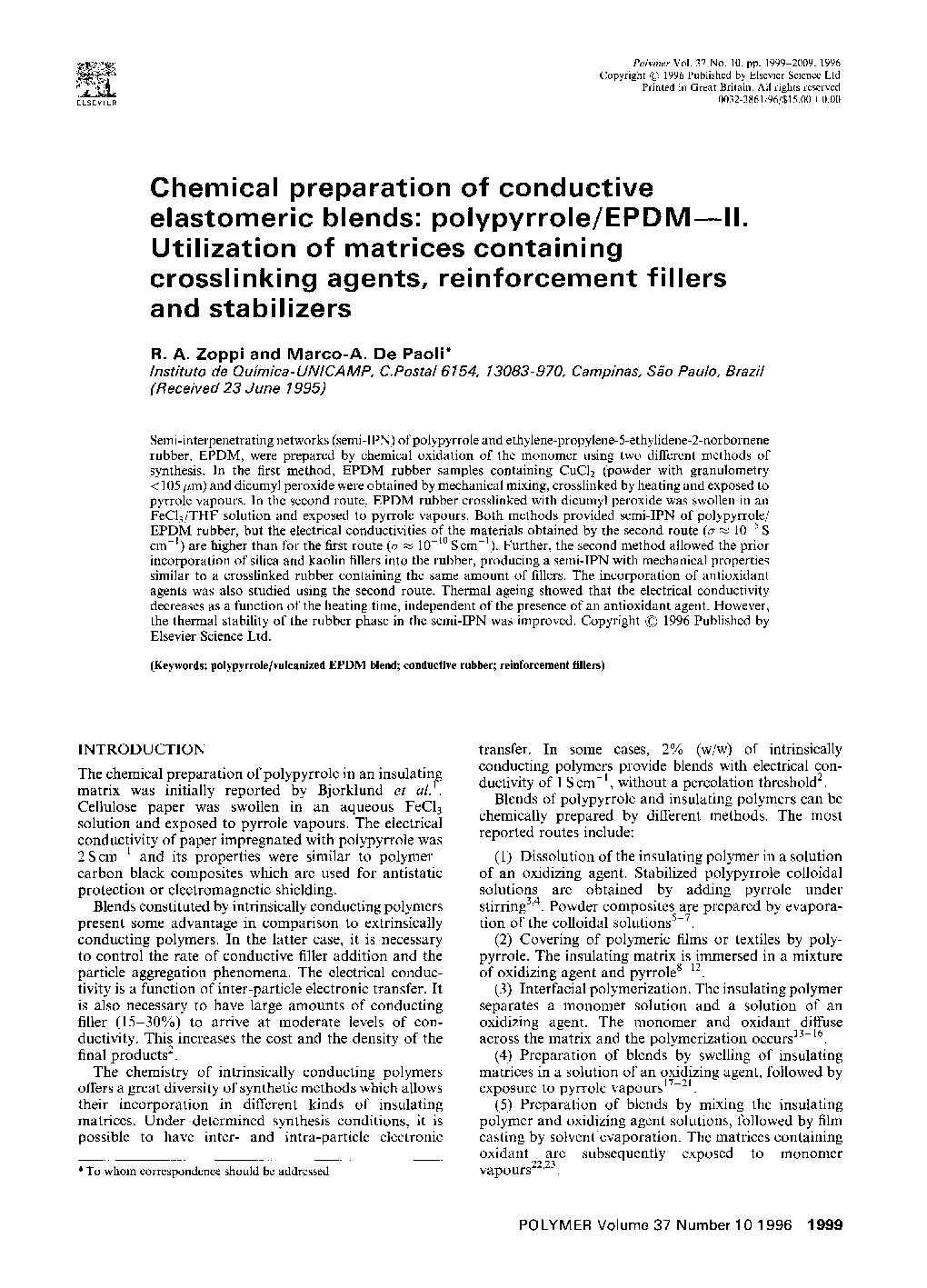| Article ID | Journal | Published Year | Pages | File Type |
|---|---|---|---|---|
| 5198691 | Polymer | 2009 | 11 Pages |
Abstract
Semi-interpenetrating networks (semi-IPN) of polypyrrole and ethylene-propylene-5-ethylidene-2-norbornene rubber, EPDM, were prepared by chemical oxidation of the monomer using two different methods of synthesis. In the first method, EPDM rubber samples containing CuCl2 (powder with granulometry < 105 μm) and dicumyl peroxide were obtained by mechanical mixing, crosslinked by heating and exposed to pyrrole vapours. In the second route, EPDM rubber crosslinked with dicumyl peroxide was swollen in an FeCl3/THF solution and exposed to pyrrole vapours. Both methods provided semi-IPN of polypyrrole/EPDM EPDM rubber, but the electrical conductivities of the materials obtained by the second route (Ï â 10â5S cmâ1) are higher than for the first route (Ï â 10â10S cmâ1). Further, the second method allowed the prior incorporation of silica and kaolin fillers into the rubber, producing a semi-IPN with mechanical properties similar to a crosslinked rubber containing the same amount of fillers. The incorporation of antioxidant agents was also studied using the second route. Thermal ageing showed that the electrical conductivity decreases as a function of the heating time, independent of the presence of an antioxidant agent. However, the thermal stability of the rubber phase in the semi-IPN was improved.
Related Topics
Physical Sciences and Engineering
Chemistry
Organic Chemistry
Authors
R.A. Zoppi, Marco-A. De Paoli,
